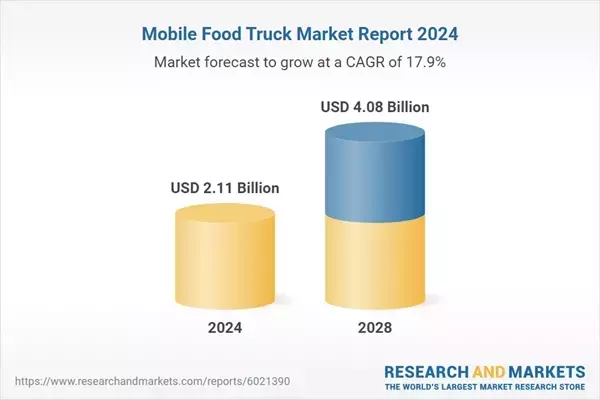Mobile Food Truck Market Soars to New Heights in 2024

The mobile food truck industry is witnessing an unprecedented surge, driven by a multitude of factors that have propelled its market value from .8 billion in 2023 to an estimated .11 billion in 2024. This rapid growth is expected to continue, reaching .08 billion by 2028, with a compound annual growth rate (CAGR) of 17.9%. The market's expansion can be attributed to eco-friendly practices, increased event participation, diverse culinary offerings, and the introduction of innovative business models. Key trends shaping the future include the adoption of hybrid trucks, customizable menus, and loyalty programs. Additionally, the rise of fast food consumption has further fueled this market, offering convenient and accessible meal options.
Rapid Expansion of Mobile Food Trucks: A Global Phenomenon
In the vibrant autumn of 2024, the mobile food truck market has emerged as a significant player in the global food service industry. North America currently holds the largest share, while the Asia-Pacific region is poised to become the fastest-growing area in the coming years. The market's historic growth, bolstered by environmental sustainability initiatives and a growing appetite for diverse cuisines, has set the stage for remarkable expansion. For instance, companies like Aviko reported a notable 9% increase in the UK fast food sector from 2021 to 2022, highlighting the broader trend towards quick, on-the-go meals.
The introduction of hydrogen fuel cell technology has also revolutionized the industry. Toyota Australia launched the FCV Express Diner, a zero-emission food truck powered by hydrogen, showcasing the potential for sustainable food service. Moreover, autonomous delivery services, such as Gatik's collaboration with Kroger in Texas, are transforming logistics and enhancing operational efficiency. These innovations not only reduce environmental impact but also cater to evolving consumer demands for convenience and variety.
Market segmentation reveals distinct trends across product types, sizes, and applications. Unpowered, electric, and gasoline-powered food trucks each cater to specific needs, while small, medium, and large trucks serve different market segments. Applications range from scenic spots and streets to other emerging areas, reflecting the industry's adaptability and reach.
Implications and Future Prospects
From a journalistic perspective, the rapid growth of the mobile food truck market underscores the importance of innovation and adaptability in today's fast-paced world. As consumers seek more convenient and environmentally friendly dining options, businesses must continuously evolve to meet these demands. The integration of cutting-edge technologies, such as hydrogen fuel cells and autonomous vehicles, not only enhances operational efficiency but also promotes sustainability. This shift towards greener practices sets a positive example for other industries, demonstrating that economic growth and environmental responsibility can go hand in hand. Ultimately, the mobile food truck market serves as a testament to the power of innovation and the enduring appeal of diverse, accessible cuisine.